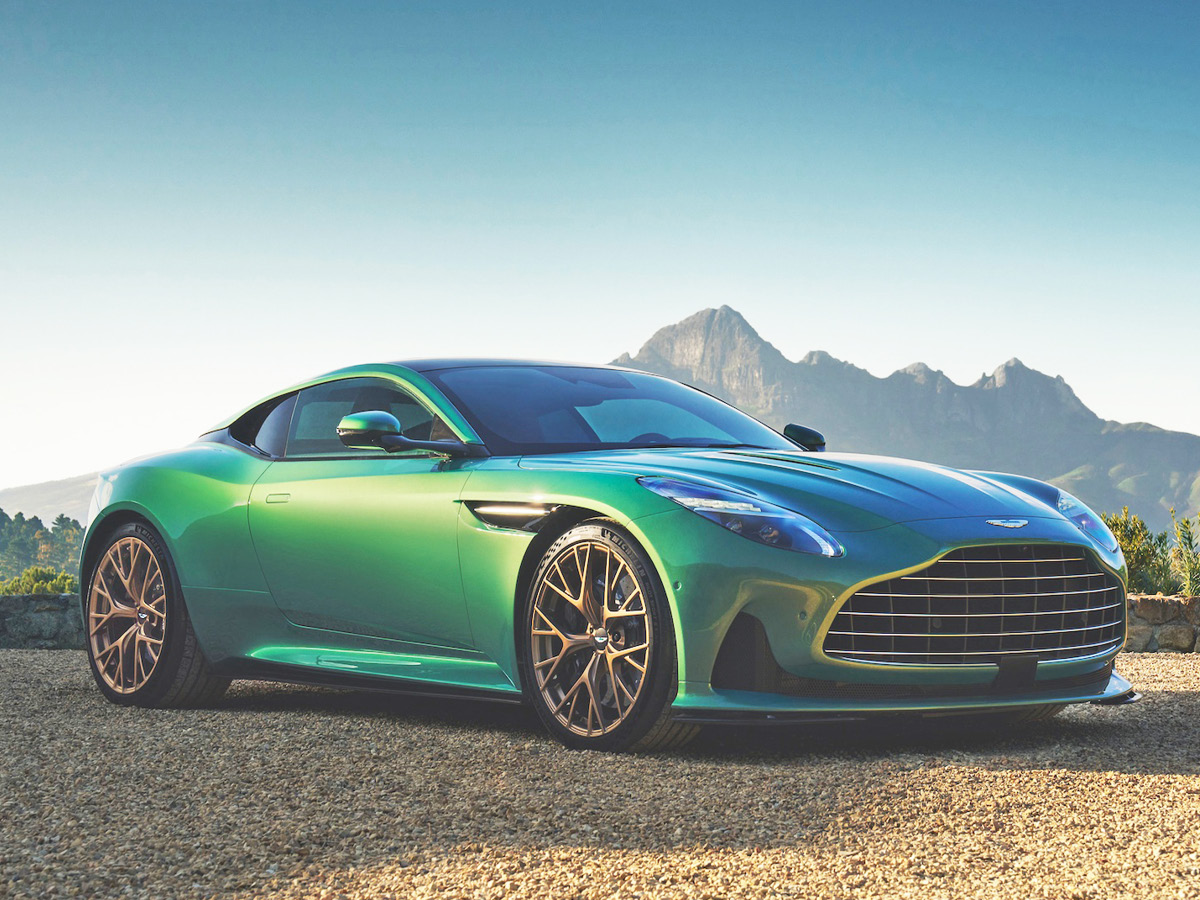A “Super” New Chapter in the DB’s 75-Year Timeline
Every newly introduced supercar rides in on an expected wave of hype, “redefining” this or “re-imagining” that. One must stand apart from the pack, right? And so, Aston Martin has decided that old definitions do not fit its newly unveiled DB12. Perhaps this passage from the automaker’s media release could use John Cleese reciting most British-ly:
“Combining a scintillating driving experience with exceptional refinement, state-of-the-art technology, and indulgent luxury, the DB12 demands a new definition. Grand is not enough; this is the world’s first Super Tourer.”
All jesting aside, let’s dig into the latest GT from Aston Martin, as, quite honestly, it really does look super.
DB Stands for Success
Aston Martin says it is celebrating 75 years of DB models, named for David Brown, the machine-tool and tractor maker who joined a long line of Aston Martin rescuers in 1947. It was only later that the company retroactively renamed the first car developed under Brown, the pretty 1948 four-cylinder 2.0-Litre Sports, as the DB1. Just 15 were made, but automotive marketing departments reserve the right to revise history as needed.
The DB series evolved through DB2 and DB2/4, DB4, with the fabulous 1963 DB5 bringing global fame thanks to its role as fictional British MI6 agent James Bond’s gadget-laden ride in the 1964 hit movie, “Goldfinger.” The DB6 followed, succeeded by the modernized 1969 DBS, which, after Brown sold the company in 1972, became the renamed “V8” that lasted through 1989. (The DBS name would return decades later.)

The DB Returns
When Aston Martin again needed rescue in 1987, Ford Motor Company stepped in, and in 1994 the stunning Ian Callum-designed DB7 put the automaker on the road to higher volume and profitability. Don’t mind Aston Martin’s fuzzy math; the DB9 followed the DB7; the DB10 was a special car built only for use in the 2015 James Bond movie “Spectre,” and the DB11 has been its flagship production model since 2016.
The DB models were truly grand tourers, so how does one evolve to “super tourer?”
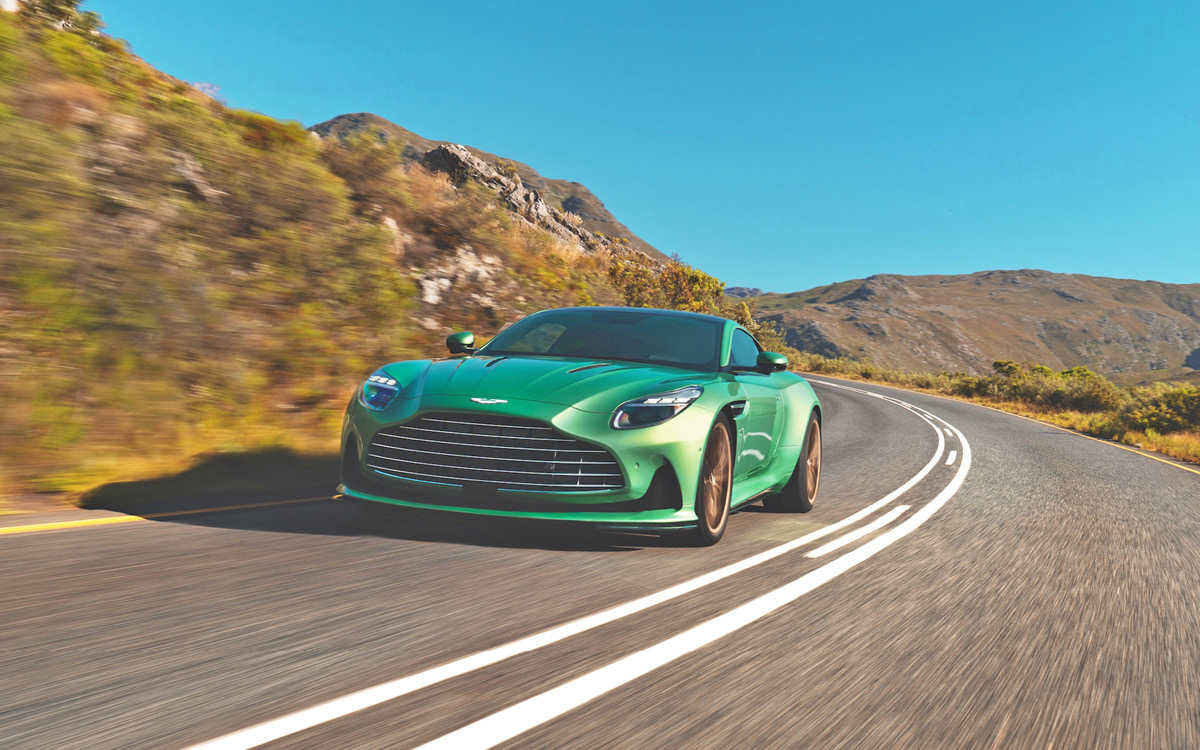
Super Style
The DB12, which begins deliveries in the fall, essentially picks up where the DB11 left off. Aston Martin says the DB12 is 80 percent new, though in the car business, “new” often means updated and revised. That’s another way of saying, “If you liked the DB11, you’ll like the DB12 even more.”
The look remains pure Aston Martin, a tribute to the enduring appeal of the basic design language the DB7 established three decades ago. You could describe the DB12’s overall theme as even smoother than the DB11, but there are no gratuitous changes to the basic form. There’s a larger grille, and the new multi-layer LED headlights sweep further rearward into the fenders, but the DB12 will fit right in at future family reunions.
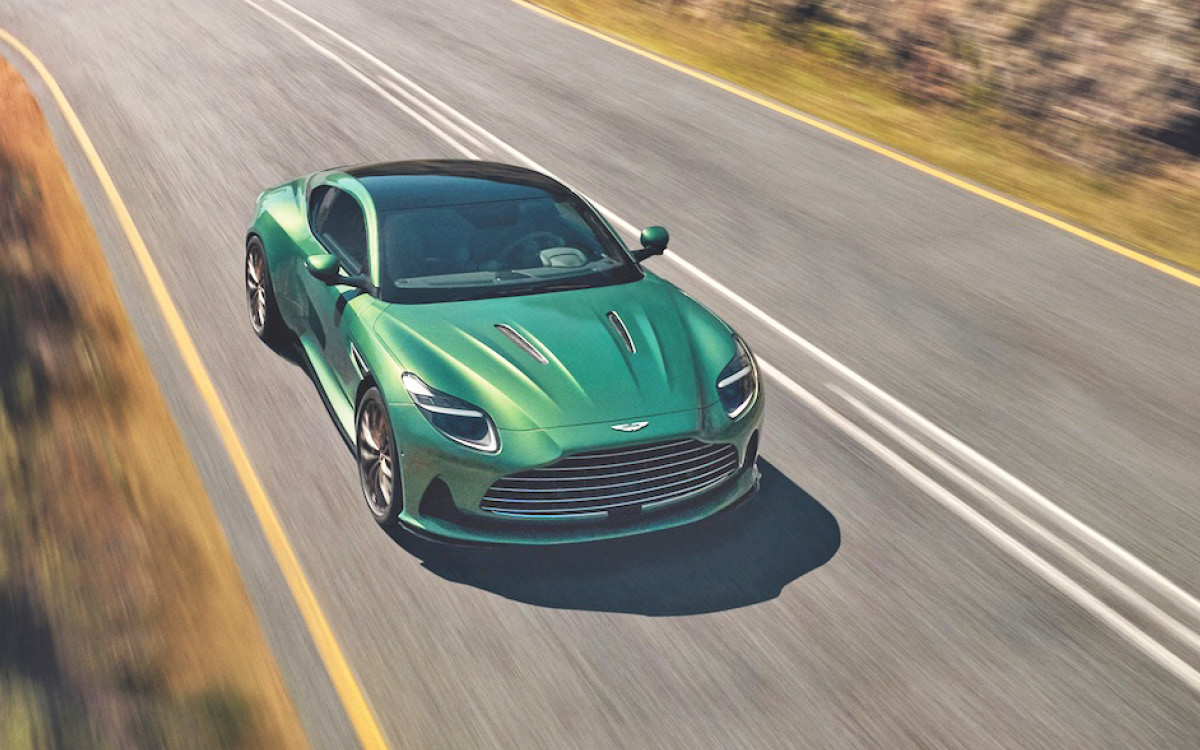
Super Power
If you’re thinking that “super touring” is synonymous with V12 power, adjust your expectations. The Aston Martin DB12 is V8-only. Aston Martin’s engine supply contract with Mercedes-AMG continues, and the DB12 inherits a much revised version of the hand-built 4.0-liter twin-turbo V8 used in the DB11. The new engine delivers a rousing 671 horsepower at 6,000 rpm and sustains 590 lb-ft of torque from 2,750-6,000 rpm. That easily beats the DB11’s V8, as well as the DB11 AMR’s V12. It also beats its closest rival, the Ferrari Roma, by 59 hp and 29 lb-ft.
Power moves through a revised version of the DB11’s eight-speed automatic transmission, reprogrammed for faster shifts. Throw in a new, lower axle ratio, and the DB12 will deliver a 3.5-second 0-60 time and a 202-mph top speed, according to Aston Martin. In that axle housing is a new electronically controlled differential to better manage all that power. Aston Martin calls it “E-Diff,” just like Ferrari does.
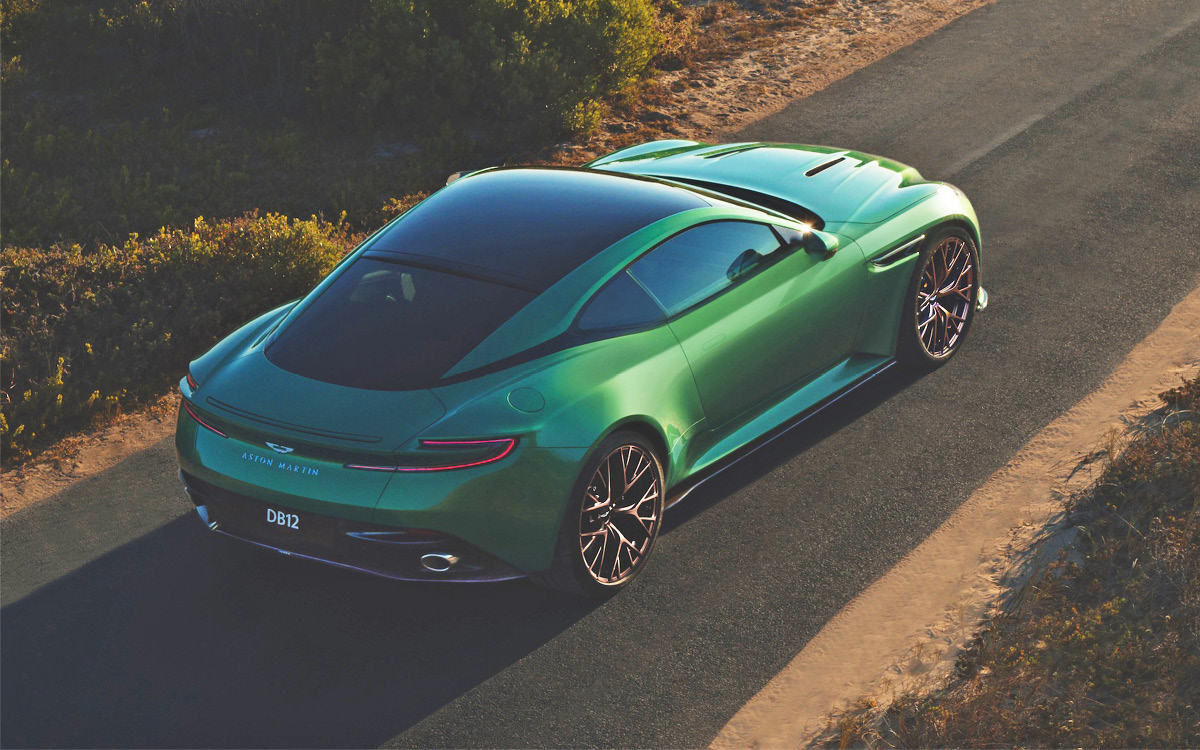
Super Agility
The DB12 rides on slightly wider track dimensions than the DB11. Aston Martin says the DB12’s aluminum body structure is 7 percent stiffer than the DB11’s, and suspension components have been suitably tweaked for even better handling. Meanwhile, new Bilstein DTX adaptive dampers are said to offer much greater operating range than the DB11’s dampers. So, expect a better ride with that heightened agility.
The standard 21-inch wheels wear Michelin’s new Pilot Sport S5 tires, but a version developed especially for the DB12. A foam insert in the new tire reduces road noise. Brakes are huge, too, but you’ll have to pay extra if you want the carbon-ceramic discs that cut 60 total pounds of unsprung weight.
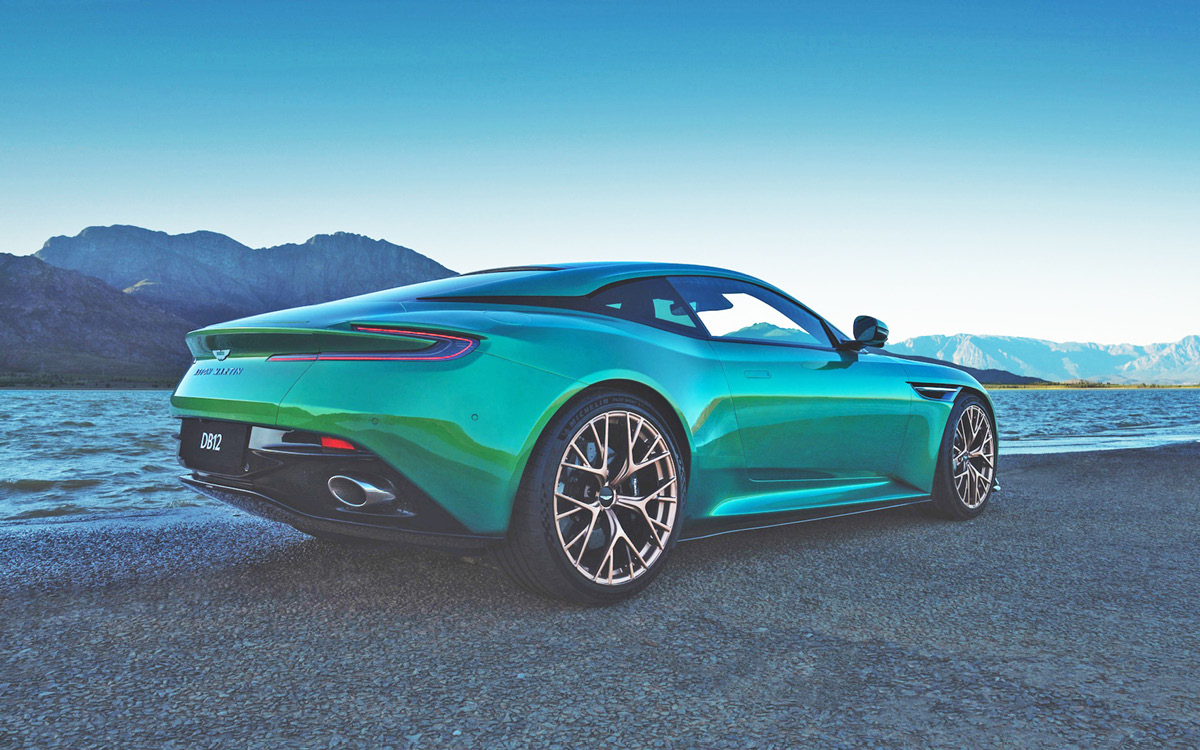
Super Cockpit
A look at the cockpit seems to justify the “super tourer” descriptor. The design appears to deftly blend the latest digital tech with truly elegant surroundings. Or, as Aston Martin puts it: “Swathed in aromatic, hand-stitched Bridge of Weir hides, this cosseting space embodies true super tourer values.”
The wide console presents enough buttons and switches (including the automatic transmission’s tiny shifter) to look ready for Mr. Bond. These physical controls should be a lot more user-friendly than forcing drivers to wade through screen menus, as other automakers do. The 10.3-inch infotainment touchscreen integrates navigation with 3-D mapping and available Wi-Fi. The driver can also access smartphone nav apps via Apple CarPlay and Android Auto.
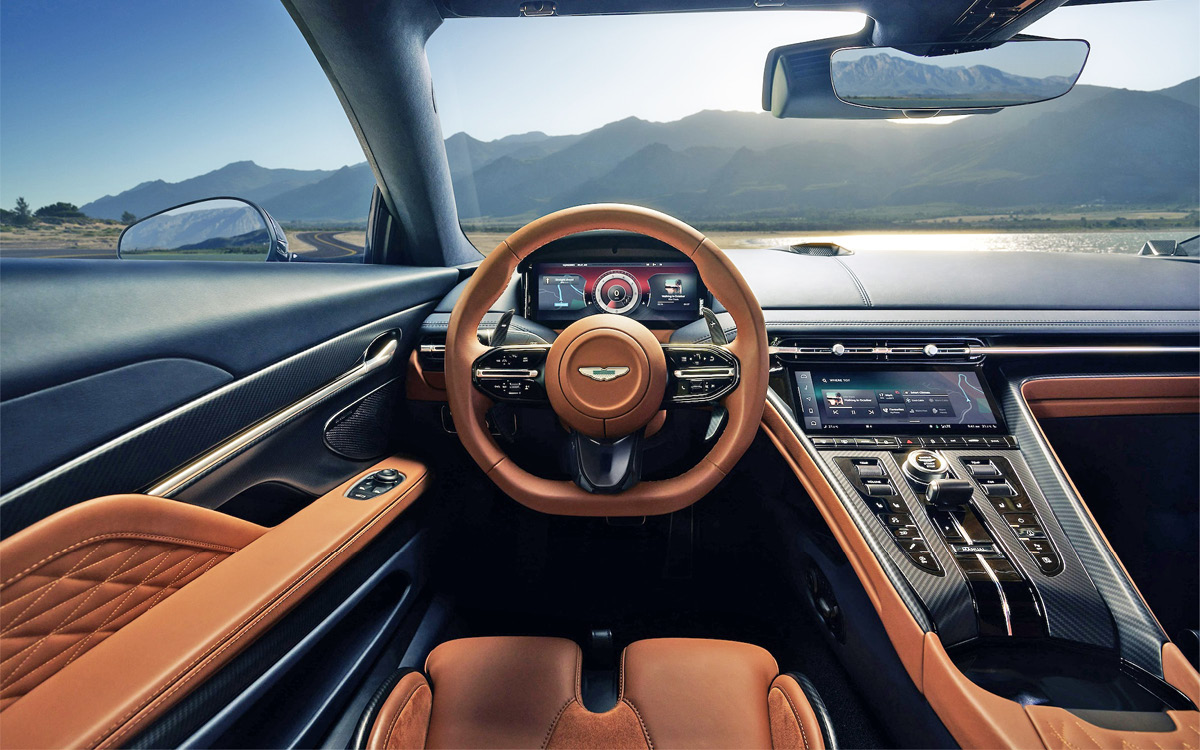
Super Price?
And what is the price for all this super-touring Aston Martin goodness? Expect a start at about $245,000 for the DB12 coupe, or right around a Ferrari Roma. Like the Roma, the DB12 will likely get a convertible sibling (Volante in Aston-speak). If the DB12’s standard spec is not up to your personal standards, you can always avail yourself to Aston Martin’s “Q” customization program.
We doubt any auto media, DB12 customers, or future concours d’ elegance judges will pick up Aston Martin’s “Super Tourer” nomenclature (which only the automaker capitalizes). But it’s a safe bet that, when it arrives, the new Aston Martin DB12 will be judged a super GT by those who drive it.


